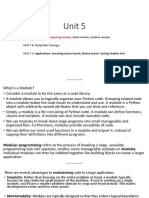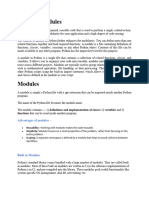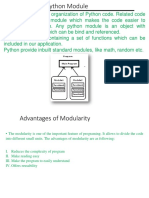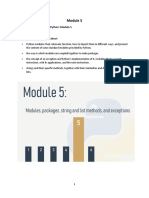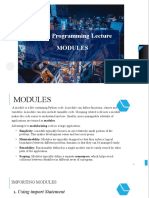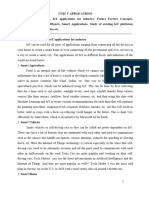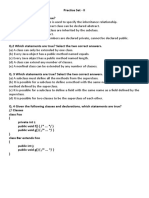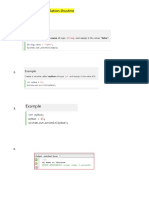0% found this document useful (0 votes)
20 views17 pagesModules
Modules allow Python code to be organized into reusable libraries. A module is a Python file with a .py extension that contains functions and other code that can be imported into other programs. Common built-in Python modules include math, statistics, and others that provide useful functions like trigonometric functions, statistical calculations, and more. Modules allow code to be reused, simplify programs by splitting them into focused parts, and avoid naming collisions.
Uploaded by
V MERIN SHOBICopyright
© © All Rights Reserved
We take content rights seriously. If you suspect this is your content, claim it here.
Available Formats
Download as DOCX, PDF, TXT or read online on Scribd
0% found this document useful (0 votes)
20 views17 pagesModules
Modules allow Python code to be organized into reusable libraries. A module is a Python file with a .py extension that contains functions and other code that can be imported into other programs. Common built-in Python modules include math, statistics, and others that provide useful functions like trigonometric functions, statistical calculations, and more. Modules allow code to be reused, simplify programs by splitting them into focused parts, and avoid naming collisions.
Uploaded by
V MERIN SHOBICopyright
© © All Rights Reserved
We take content rights seriously. If you suspect this is your content, claim it here.
Available Formats
Download as DOCX, PDF, TXT or read online on Scribd
/ 17









